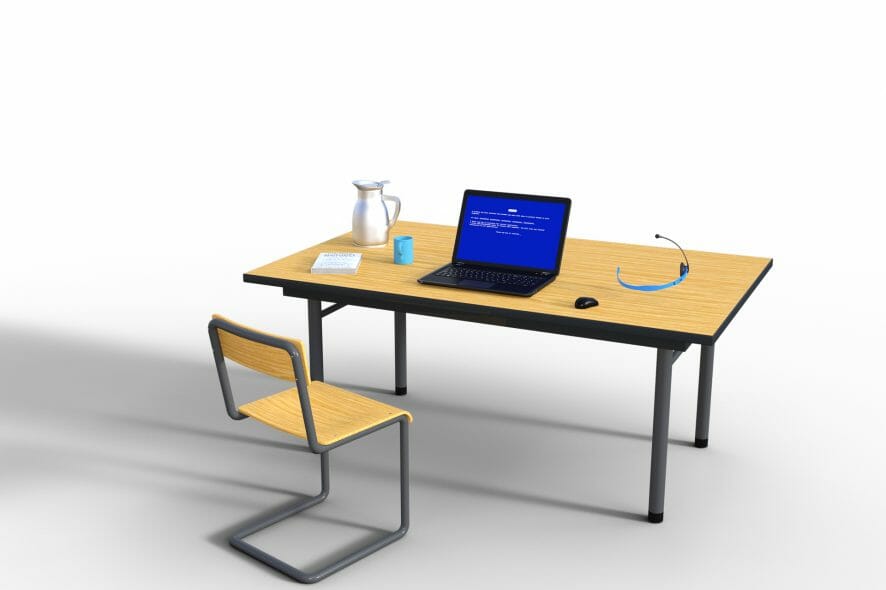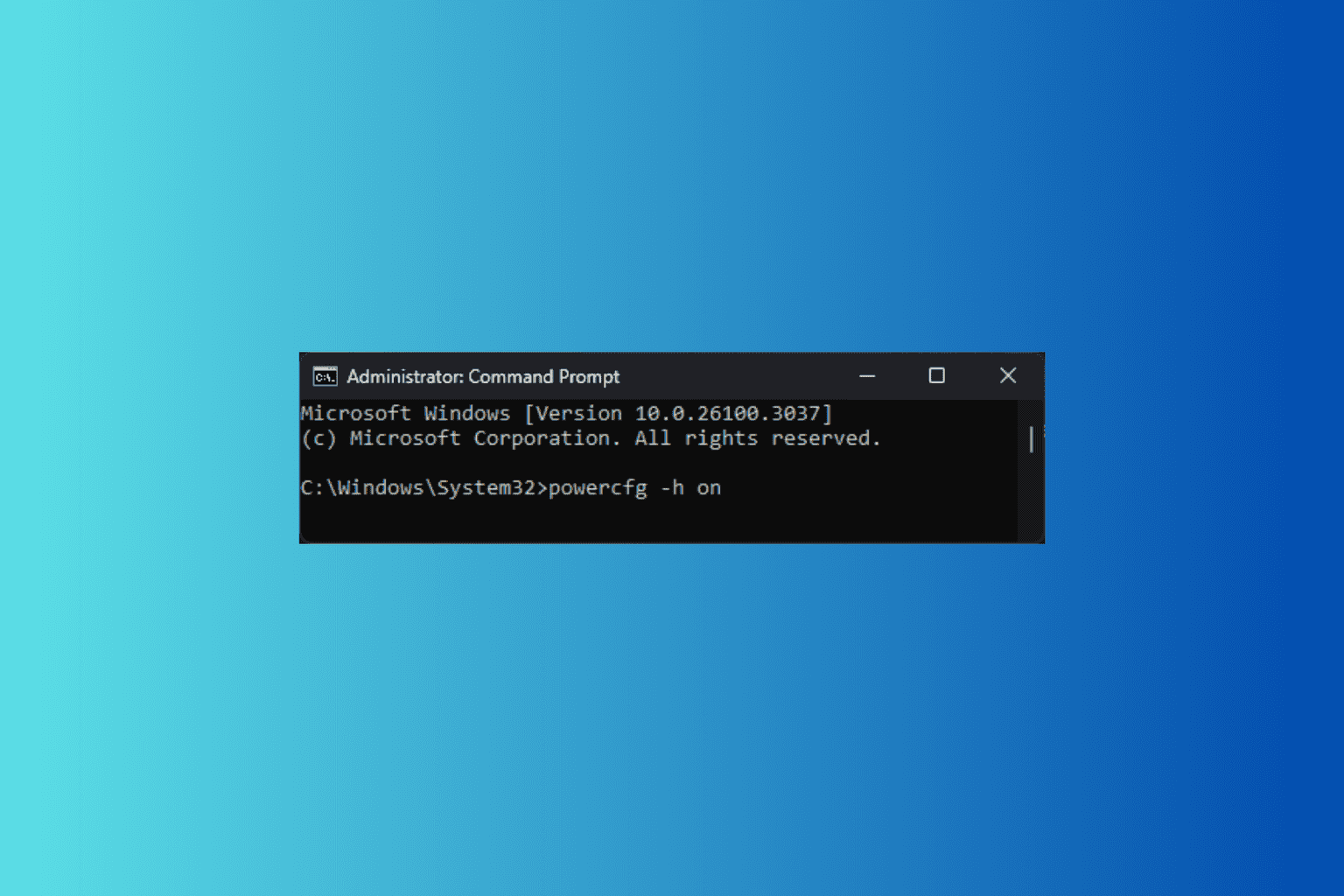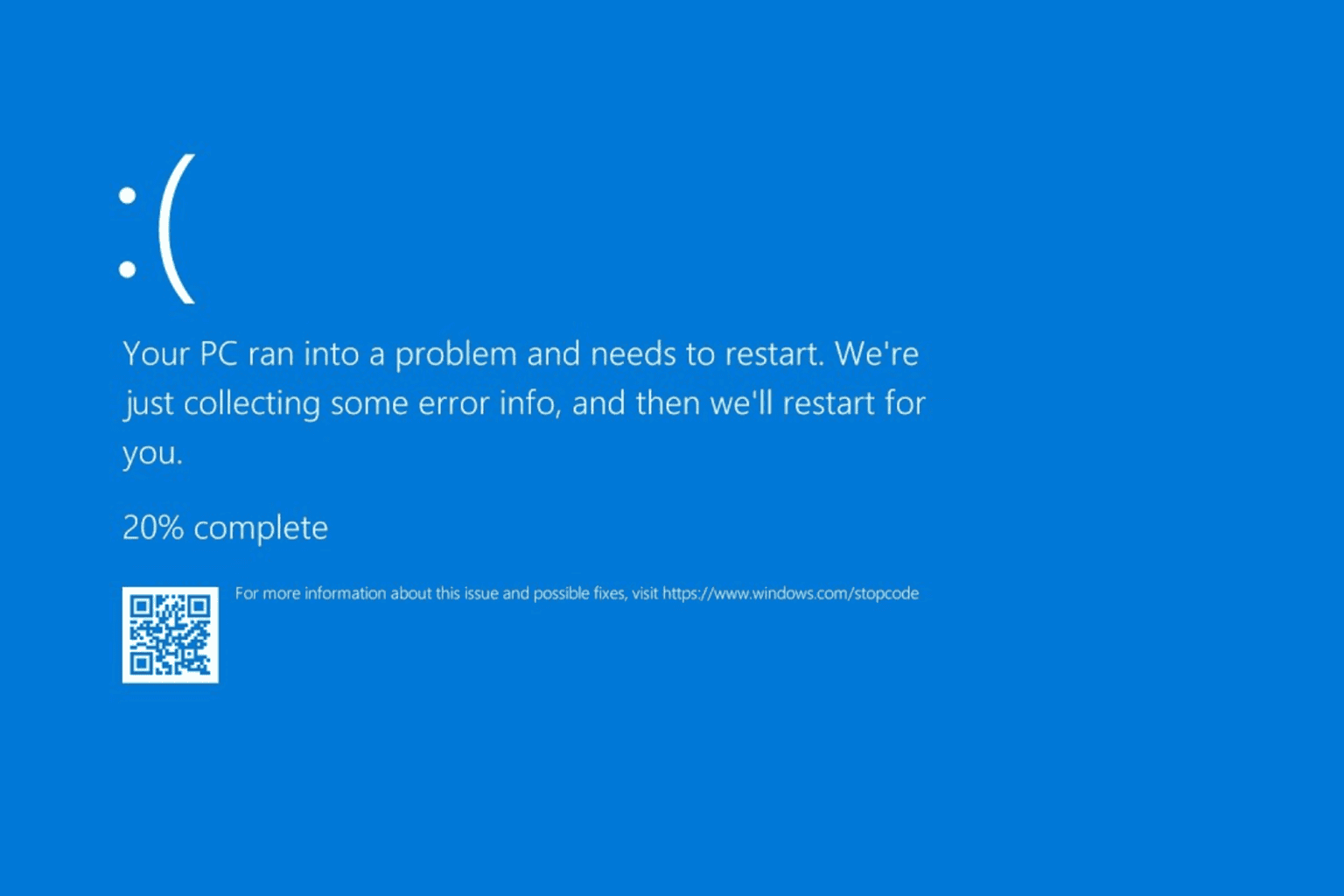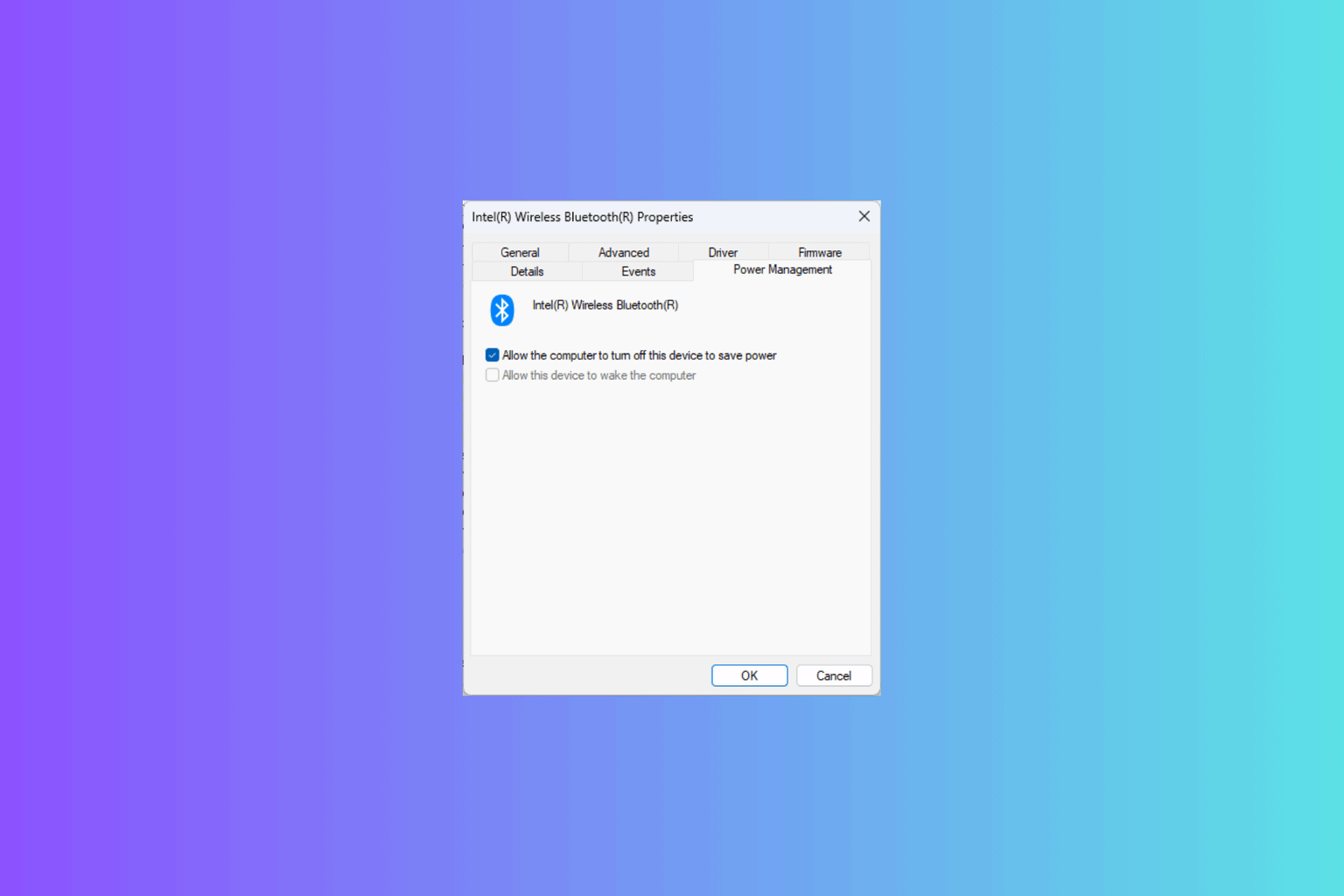CONFIG LIST FAILED error on Windows PCs [FULL FIX]
8 min. read
Updated on
Read our disclosure page to find out how can you help Windows Report sustain the editorial team. Read more
Key notes
- The config list failed is an error many users are familiar with when using Windows 10.
- We studied the config list failed error on Windows PCs and gathered the best solutions to fix it.
- Since a few years ago, updating your drivers fixed the config list failed error even in Windows XP.
- Try a professional driver software and fix the config list failed to boot error once and for all.

Although computer errors are relatively common and harmless, certain errors such as CONFIG LIST FAILED BSoD error can be a major problem on Windows 10.
These types of errors can be rather troublesome, therefore it’s crucial that you know how to fix them. We have prepared the most efficient solutions, so read the next section.
How can I fix CONFIG LIST FAILED BSoD error?
- Keep Windows 10 up to date
- Update your drivers
- Run the BSOD Troubleshooter
- Run the SFC scan
- Run DISM
- Run chkdsk
- Uninstall problematic software
- Change your hard drive mode from AHCI to ATA
- Run Automatic Repair / Reset Windows 10
- Check your hardware
1. Keep Windows 10 up to date
Blue Screen of Death errors can be caused by faulty hardware or a certain software that isn’t fully compatible with Windows 10.
Therefore sometimes it can be hard to find and fix the cause of CONFIG LIST FAILED error.
In order to avoid getting BSoD errors, it’s important to download and install the latest Windows 10 updates.
By using Windows Update you’ll download the latest security patches, and many of these patches will also fix various hardware and software issues.
By installing the latest patches, you’ll make sure that your computer is stable and safe from BSoD errors.
2. Update your drivers
Drivers are an integral part of every operating system since they allow your PC to recognize and use your hardware.
If a certain driver isn’t compatible with Windows 10, you’ll encounter a BSoD error such as CONFIG LIST FAILED and your computer will crash.
Fortunately, updating drivers is rather simple, and in order to do it, you just need to visit your hardware manufacturer’s website, locate your device and download the latest drivers for it.
Bear in mind that in order to fix the CONFIG LIST FAILED error, you’ll have to update all major components.
Update drivers automatically
Searching for drivers on your own can be time-consuming. So, we advise you to use a tool that will do this for you automatically. Download, install and set it to scan your operating system.
This software detects all outdated, missing, or damaged drivers from your computer. Once the scanning is done, you receive a detailed report with all your drivers.
In addition, the tool allows you to create a backup for the updated drivers, and ensure the restore point in case you encounter some issues.
The last step you have to take is to choose what are the drivers you wish to download and install using PC HelpSoft Driver Updater.
3. Run the BSOD Troubleshooter
- Open the Settings app and go to the Update & Security section.
- Go to Troubleshoot.
- Select BSOD from the right pane and click Run the troubleshooter.
- Follow the on-screen instructions to complete the process.
The next thing we’re going to try is running Windows 10’s built-in troubleshooter. This tool can be used for addressing all kinds of different problems, including BSOD issues.
So, it could also resolve the CONFIG LIST FAILED error.
4. Run the SFC scan
- Go to Search, type cmd, and open Command Prompt as Administrator.
- Enter the following line and press Enter:
sfc/scannow - Wait until the process finishes (it’s a long one).
- If the tool finds a corrupt system file, it will automatically repair it.
- Close the Command Prompt and restart your computer.
Another troubleshooting tool we’re going to try here is the SFC scan.
The system file checker is a command-line tool that basically scans through your system searching for potential issues.
If a corrupted system file is a problem, this tool will automatically repair it, and the problem will be resolved.
5. Run DISM
And the third troubleshooting tool we’re going to try is DISM. Deployment Image Servicing and Management (DISM) is a tool that re-deploys the system image and resolves potential issues along the way.
So, it could be helpful when addressing the CONFIG_LIST_FAILED error, as well.
We’ll walk you through both standard and the procedure that utilizes the installation media.
Standard way
- Right-click Start and open Command Prompt (Admin).
- Paste the following command and press Enter:
DISM /Online /Cleanup-Image /RestoreHealth
- Wait until the scan is finished.
- Restart your computer and try updating again.
With the Windows installation media
- Insert your Windows installation media.
- Right-click the Start menu and, from the menu, choose the Command Prompt (Admin).
- In the command line, type the following commands and press Enter after each:
dism /online /cleanup-image /scanhealthdism /online /cleanup-image /restorehealth
- Now, type the following command and press Enter:
DISM /Online /Cleanup-Image /RestoreHealth /source:WIM:X:SourcesInstall.wim:1 /LimitAccess
- Make sure to change an X value with the letter of the mounted drive with Windows 10 installation.
- After the procedure is finished, restart your computer.
And the third troubleshooting tool we’re going to try is DISM. Deployment Image Servicing and Management (DISM) is a tool that re-deploys the system image and resolves potential issues along the way.
So, it could be helpful when addressing the CONFIG_LIST_FAILED error, as well.
We have shown you both procedures: standard and the one that utilizes the installation media.
6. Run chkdsk
- Press Windows Key + X to open Power User Menu, and select Command Prompt (Admin).
- Once Command Prompt starts enter chkdsk /f /r C: and press Enter.
- To successfully fix this problem you’ll need to scan all hard drive partitions, so replace C with the corresponding letter.
- You won’t be able to scan C drive while in Windows. Therefore you’ll have to restart your computer in order to scan it.
If you cannot access Windows 10 due to CONFIG LIST FAILED error, you can run the chkdsk by following these steps:
- Restart your computer while it boots. Repeat this step couple of times in order to start Automatic Repair.
- Choose Troubleshoot > Advanced options > Command Prompt.
- When Command Prompt starts enter
chkdsk /f /r C: - Repeat chkdsk scan for all hard drive partitions by replacing C with the appropriate letter.
- After you’re done, close Command Prompt and restart your PC.
BSoD errors can be caused by corrupted files on your hard drive.
In order to fix this issue, it’s advised to run chkdsk scan. To run a chkdsk scan, you need to apply this solution.
7. Uninstall problematic software
Certain software can cause a CONFIG_LIST_FAILED error to appear, and in order to fix it, you’ll need to find and remove the problematic software.
If you installed or updated any new software recently, be sure to remove it and check if that fixes the problem.
Another common cause for BSoD errors can be your antivirus, therefore it’s advised to remove any third-party antivirus programs and leave only Windows Defender.
It’s worth mentioning that when you uninstall an antivirus, it can sometimes leave certain files and registry entries, and it’s crucial to remove them as well.
Many antivirus companies have dedicated uninstaller tools for their software, so be sure to download one of these tools and use it to completely remove your antivirus program.
8. Change your hard drive mode from AHCI to ATA
- While your computer boots, keep pressing F2 or Del. It might be a different F key on your computer, so you’ll have to repeat this process a few times until you find the correct key.
- In BIOS, find hard drive settings and change the hard drive mode from AHCI to ATA.
- After you’re done, save changes and restart your computer.
According to users, CONFIG LIST FAILED can appear if your hard drive mode is set to AHCI. In order to fix this error, you need to enter BIOS and change it just like we have shown above.
9. Run Automatic Repair / Reset Windows 10
- Restart your computer a few times while it boots to start the Automatic Repair process.
- Choose Troubleshoot > Advanced Options > Automatic Repair.
- Now you just need to select your username and enter your password and Windows 10 will try to repair itself.
If the problem still persists, you might want to perform Automatic Repair.
If Automatic Repair doesn’t fix the problem, you might have to perform a Windows 10 reset.
By performing Windows 10 reset you’ll delete all files from your C drive, so be sure to back them up. After you create your backup, do the following:
- Start Automatic Repair by restarting your computer a few times.
- Select Troubleshoot > Reset this PC. You might need Windows 10 installation media to complete this procedure, and you can easily create one from any USB flash drive.
- Select Remove everything > Only the drive where Windows is installed > Just remove my files.
- Click the Reset button and follow the instructions.
When the reset process is completed, you’ll have a freshly installed Windows 10 without any applications that can cause the BSOD error.
If the problem still persists, it means that it’s caused by your hardware.
10. Check your hardware
A relatively common cause for CONFIG LIST FAILED BSOD error can be your hardware, so be sure that your hardware is working properly.
A most common cause can be your RAM, but almost any major component can cause this error to appear.
In addition, if you installed any new hardware recently, be sure to remove it or replace it, since it might not be fully compatible with your PC.
CONFIG LIST FAILED BSoD error can be problematic, but users reported that they managed to fix the error by updating their drivers or by changing the hard drive mode.
If these solutions don’t work for you, feel free to try other solutions from this article.


















User forum
0 messages